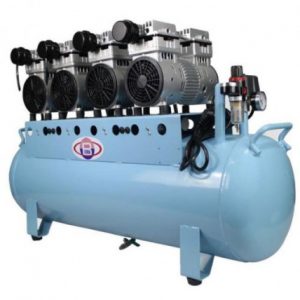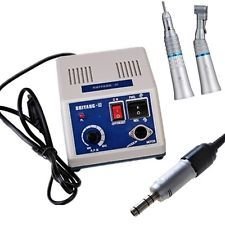In both dental and surgical applications it’s common to find medical professionals utilizing attachable light sources on their loupes. The right amount of loupe light can be an essential component to any medical application. With a clear view, a doctor can perform procedures and exams thoroughly and safely. An attachable clip-on light typically generates light from a source that can be easily clipped-on or stored nearby. Some surgical models are designed in that the cord from the light source runs from a tabletop or wall-mounted platform. And here, we first need to introduce the dental surgical light which is a kind of dental supply for sale.
As any clinician will know, the correct lighting is essential if one is to perform precision-oriented tasks such as dental procedures. During the course of a working day, most dental practitioners are constantly having to adjust their vision to cope with the contrasting light conditions produced by operating lamp and consulting room overhead lighting. To complicate matters further, our eyesight tends to deteriorate with age, meaning that as we age, our eyes require more and more light in to order to perform at the same level. Eyestrain due to poor lighting can hasten optical deterioration as well as lead to eye strain, leading to headaches, fatigue and, if forced to continuously move towards a single light source, neck and back strain. It is therefore critical to ensure that your consulting rooms have dental lighting that minimises the risk of strain whilst also ensuring an optimal view of the patient’s mouth.
Both designs will work, it really just depends on the type of procedure and how your medical environment is set up. It’s important to keep in mind that a good light source can be essential during your medical application. Without proper dental surgical light, medical professionals can sometimes make an oversight when scrutinizing a patient. Loupes, in general, help determine a better diagnosis for patients and loupe light is an additional benefit during these applications. For many dentists, an attachable loupe light is a crucial component in performing precision dentistry. Dentists and dental assistants can often block the overhead light when examining a patient. Loupe lights allow dentists to focus light onto a particular spot in the patient’s mouth, without shining an uncomfortable bright light into the patient’s eyes. The benefits of using an added light source includes the ability to clearly see the precise area of the patient. With this clear visibility, doctor’s can use best practices as they keep their patient safe and provide excellent patient care. If you have any questions or comments regarding loupe light, please let us know in the comment box below!
The right dental lighting should strike a balance between providing enough high intensity illumination to enhance work precision, especially when it comes to things like colour matching for restorations and cosmetic work, whilst minimising glare and other visual irritants caused by phenomena such as strobing and flickering. Ideally, the ratio of contrast between the lighting used to illuminate the treatment site and the area surrounding the patient should never be greater than 1:5 in terms of strength. By way of example, then, if the working area around the patient’s mouth is in the region of 20,000 lux then the lighting in the environment immediately surrounding this should be no less than 4,000 lux. Specialist overhead lighting systems can help to soften this difference in lighting strength whilst simultaneously minimising shadows, glare and flickering and reduce heat emissions to ensure comfort and accuracy.




